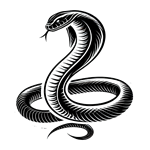CHINESE KUNG FU


Chinese Kenpo
Chinese Kenpo is a precursor to American Kenpo and retains many of the traditional elements found in Chinese Kung Fu, specifically the five animal influences found in Nanquan (southern) kung fu styles.
Chinese styles such as Hung Gar, Choy Lit Fut, Chin Na, and many others are also incorporated into the training.
While American Kenpo training generally dispenses with ancient weapons, impractical for self-defense in modern life, such as the spear, broadsword or staff. These weapons, however, are incorporated in Chinese Kenpo training as a matter of conditioning, tradition and historical significance.
Chinese Influences
Dragon

The Dragon represents focus, concentration, and wisdom. The movements of the Dragon and long, flowing and continuous.
Tiger
The Tiger represents strength, power and courage. In contrast to the Dragon, the Tiger’s movements are generally short, direct and hard.

Serpent

The Serpent represents internal energy (Chi) and fluidity in movement. The strikes employed by the serpent are aimed toward vital targets, such as eyes and throat.

Leopard
The Leopard represents speed and power combined with stealth and cunning. The Leopard is a stalking predator and symbolizes studying an adversary, looking for the precise opportunity for attack.
Crane

The Crane represents grace and balance. The seemingly delicate and fluid movements are deceptively powerful.
Chinese Styles
Hung Gar
Hung Gar Kung Fu is a traditional Southern Chinese martial art that combines powerful, rooted stances with strong hand techniques and dynamic footwork. It is known for its emphasis on internal strength, balance, and flexibility, while incorporating both offensive and defensive movements. The style is characterized by its low, solid stances, such as the "horse stance," and its use of circular and linear techniques, including powerful punches, kicks, and blocks. Hung Gar also incorporates the use of traditional weapons, and its training often focuses on cultivating both physical and mental discipline. The style is deeply rooted in Chinese philosophy, blending martial skill with spiritual growth.
Choy Li Fut
Choy Li Fut Kung Fu is a dynamic and versatile Southern Chinese martial art that blends techniques from both the Shaolin and Wudang traditions. It was developed by the legendary martial artist Chan Heung in the 19th century and is known for its wide range of movements, incorporating powerful strikes, circular motions, and rapid footwork. The style emphasizes the use of long-range and close-combat techniques, including punches, kicks, sweeps, and joint locks. Choy Li Fut is distinguished by its fluid, flowing movements and the integration of both hard and soft principles, which makes it effective in various combat situations. It also includes traditional weapon training and focuses on building physical strength, agility, and mental focus.
Mi Zong Quan
Mi Zong Quan, also known as "Lost Track Fist," is a traditional Chinese martial art that emphasizes deceptive footwork, agility, and unpredictable strikes. It is a style renowned for its unique ability to confuse and disorient opponents through its swift, changing movements. The technique draws on a combination of both internal and external principles, utilizing evasive maneuvers, quick attacks, and hidden strikes to create openings. Mi Zong Quan incorporates a range of hand techniques, including punches, palm strikes, and low kicks, as well as joint locks and throws. The style's adaptability and emphasis on fluid, circular movements make it highly effective in close combat and on the defensive. It is deeply rooted in the philosophy of using minimal effort for maximum effect, often relying on the opponent’s own force to redirect or counter their actions.



